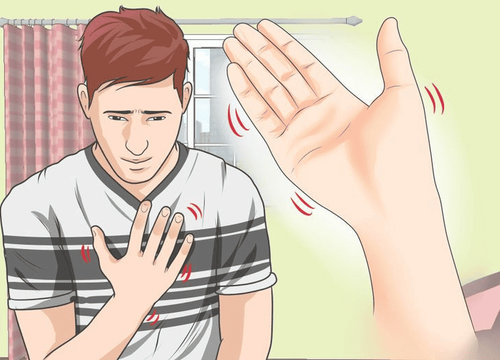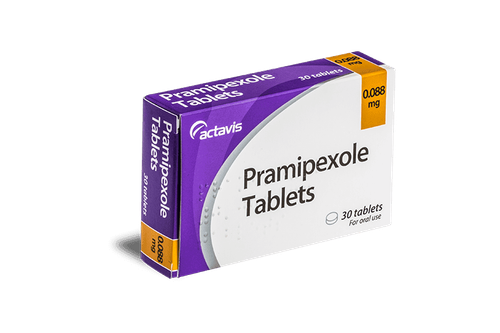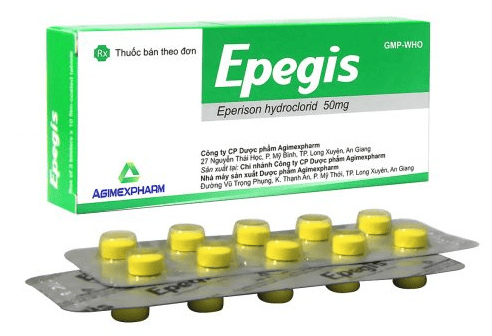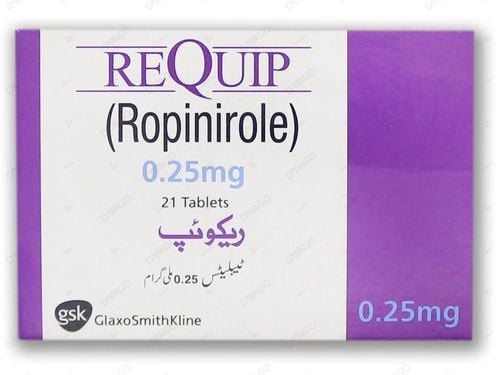This is an automatically translated article.
Article written by BSCK II Khuc Thi Nhan, Department of General Health - Vinmec Times City Hospital
Parkinson's disease was first described by an English doctor named James Parkinson in 1817, from which the disease bears his name. Parkinson's disease is characterized by tremors, rigidity, and decreased movement.
Parkinson's disease is a chronic degenerative disease of some brain organizations (striatum, black crescent) leading to decreased production of Dopamine, causing disability in the elderly ranked second after cerebrovascular diseases. The disease progresses gradually and requires lifelong treatment, costing the family and society. However, if diagnosed, early and timely treatment will reduce symptoms as well as slow the progression of the disease.
1. Causes of Parkinson's disease
Until now, scientists have not found the cause of Parkinson's disease, but the disease is related to genetic factors (family) and/or exposure to herbicides (MTTP: 1-methyl-4 phenyl-1,2,3,6-tetrahydropyridine).
Parkinson's disease is found everywhere, the frequency is 1 case / 700 population, the ratio is equal in both men and women. Most cases are diagnosed between the ages of 40 and 70, with an average of 55 years of age.
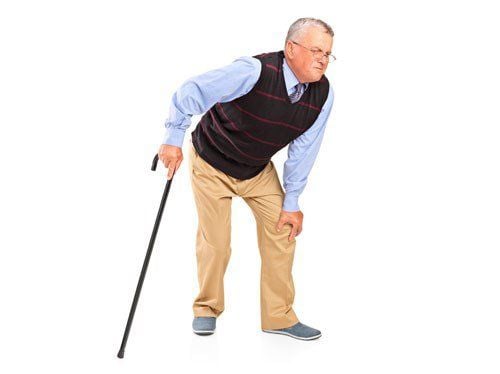
Bệnh Parkinson gây ảnh hưởng nghiêm trọng về sức khỏe và trí tuệ của người bệnh
2. Clinical symptoms
2.1. Initial symptoms
The disease progresses slowly with symptoms such as rapid fatigue, muscle weakness, muscle aches (shoulder pain), decreased sense of smell (decreased ability to distinguish odors from food), these are nonspecific symptoms. characteristic of the disease.
2.2. Main symptoms of the disease
Tremor, stiffness (increased muscle tone), decreased movement.
Run Run at rest, small tremor, about 4 - 8 cycles / a second. Tremor disappears with sleep and voluntary movement but increases with emotion, fatigue, and when trying to concentrate; The tremor usually begins on one side and is mainly in the fingertips (movements like counting money or rolling pipe tobacco), but also tremors in the legs.
Increased muscle tone (stiffness) Stiffness at first on one side of the body, then spread to the opposite side and finally the whole body resulting in movements that are halted or hesitant during warm-up.
Reduce movement The patient blinks less; reduced gestures with non-expressive facial expressions; reduce arm swing when walking; difficulty in performing rapid alternating movements such as hand pronation...
Movement disorders manifest: when walking, take small steps with stomping at warm-up; small letters; monotonous hard to say...
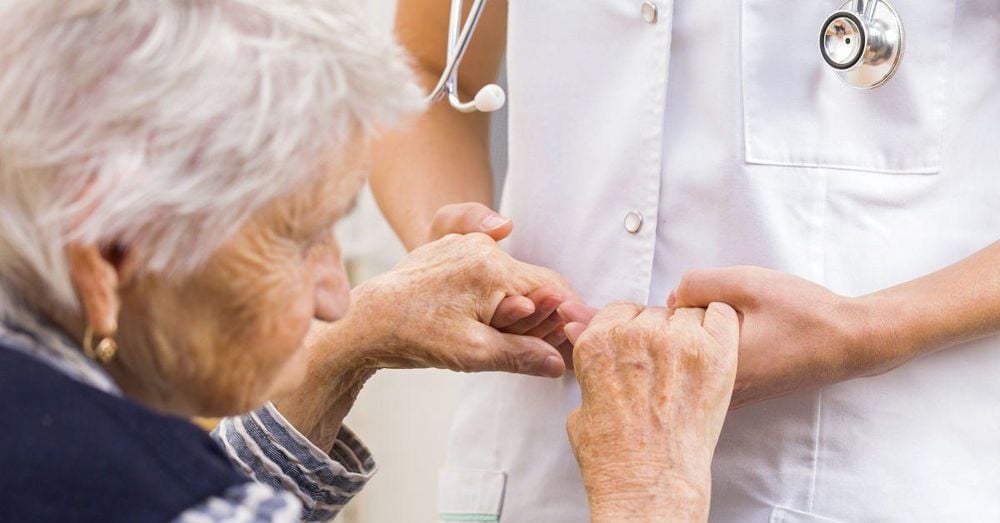
Run là một triệu chứng điển hình của bệnh nhân Parkinson
2.3. Other symptoms
Palpitations, sweating, sleep disturbance, constipation, joint pain, back pain, impotence in men, postural hypotension, bladder sphincter disorder, depression (sadness) , depressed)... to the final stage, the patient may have difficulty breathing and swallowing, physical exhaustion.
3. Diagnosis of Parkinson's disease
3.1 Diagnosis of Parkinson's disease
Diagnosis of the disease is mainly based on clinical symptoms (tremor, stiffness and decreased movement first appearing on one side of the body followed by the opposite side). The role of magnetic resonance imaging or cranial computed tomography helps to rule out other causes such as stroke, brain tumor...
Diagnosis of Parkinson's: there are 5 stages
Stage I: Symptoms Clinical symptoms on one side of the body, not affecting daily activities. Stage II: Clinical symptoms on one side of the body but affecting daily activities. Stage III: Clinical symptoms on both sides of the body, change in gait posture, no serious disability, complete autonomy. Stage IV: More severe disability, still able to walk, limited autonomy. Stage V: Impossible to walk (must be confined to a wheelchair or bed), loss of self-control.
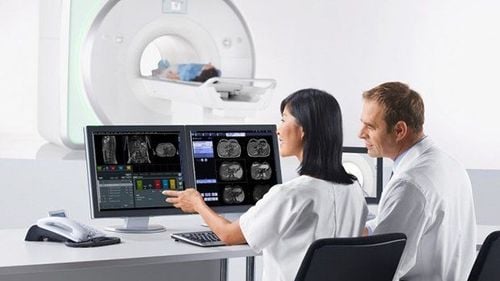
Chụp MRI giúp chẩn đoán phân biệt bệnh Parkinson với các bệnh lý khác
3.2 Differential diagnosis with Parkinson's syndrome
Have symptoms of tremor but not Parkinson's disease but due to other causes, symptoms appear on both sides of the body. Parkinson's syndrome is encountered in the following cases: family history, recurrent cerebral vascular accident, repeated traumatic brain injury, encephalitis, antipsychotic treatment (Aminazin; Haloperidol...)
Parkinson's disease responds Good response to Levodopar (L-dopar), in contrast to Parkinson's syndrome only about 20% respond to L-dopar.
4. Treatment of Parkinson's disease
4.1. Treatment goals
Relieves the symptoms of the disease such as tremors, stiffness, reduced movement.` Improve physical condition.
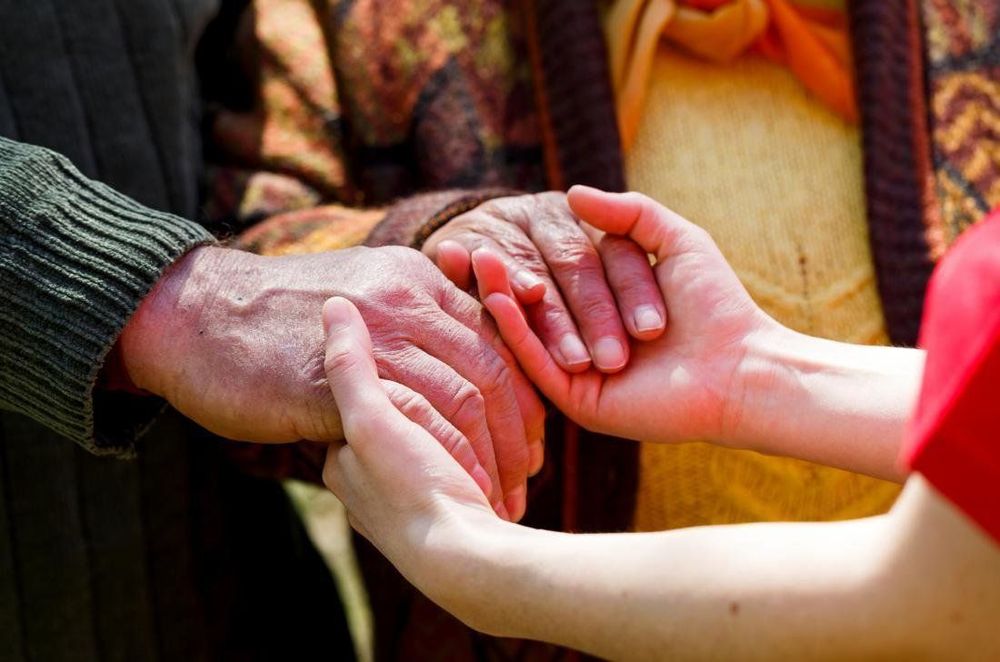
Điều trị giúp cải thiện các triệu chứng của bệnh Parkinson
4.2. Treatments
The disease requires lifelong treatment, including drug therapy and rehabilitation exercises. Depending on the case, it can be combined with surgery or stem cell transplant...
4.2.1 Drug therapy
Currently there are many drugs to treat Parkinson's disease, but depending on the clinical symptoms, depending on the age and stage of the disease, there are different drug combinations.
Drugs to treat Parkinson's:
L-dopa (Modopar, Madopar): This is the best drug for Parkinson's disease symptoms, especially with symptoms of hypertonia and decreased movement but little effect. used for tremor symptoms. The effects of the drug are best recorded during the first years of treatment in the “honeymoon phase”, which lasts 3 to 4 years. Then the drug will slow down and the effect will be short (ON/OFF phenomenon) Undesirable effects (side effects): nausea, vomiting, stomach pain, orthostatic hypotension, arrhythmia , confusion, hallucinations (unusual seeing or hearing, smelling...), dyskinesia (abnormal movements but appearing late). Avoid taking L-dopar with high doses of Vitamin B6 because it reduces the effectiveness of the drug. Anticholinergics: Trihexyphenidil (Artan). The drug is effective for tremor and hypertonia, but has no effect on decreased movement. Undesirable effects: confusion, hallucinations (especially in the elderly), dry mouth, constipation, urinary retention. Avoid using for people over 70 years old, prostate cancer, Glocom. Dopamine agonists: Pramipexole and Ropinirole, which can be used as monotherapy or in combination with L-dopar to avoid increasing the dose of L-dopar (because L-dopar in high doses can cause dyskinesia) COMT inhibitors (Tolcapone, Entacapone): prolong the use of L-Dopar by blocking the metabolism of dopamine. To be used only in people who have been treated with L-dopar but have been less effective (ON/OFF phenomenon) or when response to treatment has been inadequate. An MAO inhibitor (R asagiline, Selegiline) is a single agent or an adjunct to L-dopar that blocks Dopamine degradation to prolong the effects of L-dopar. Amantadine: A drug to treat influenza A, however, is indicated in Parkinson's disease in combination with Levodopar when side effects (dynamism) appear or are less effective. The drug is taken in gradually increasing doses and should not be stopped suddenly. Some authors recommend using for a few months then taking a break.
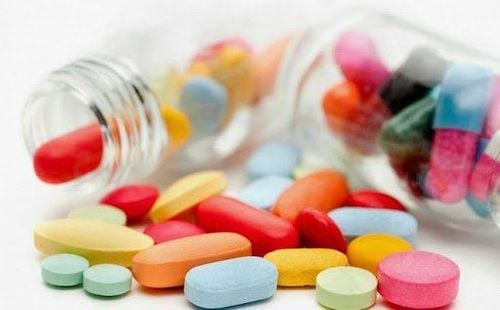
Sử dụng thuốc giúp kiểm soát được tình trạng bệnh Parkinson
4.2.2. Non-drug therapy
Besides medication, rehabilitation plays an important role in helping patients improve their quality of life, including rehabilitation exercises for movement, language, exercise, walking...
4.2.3. Surgical treatment
Today with the development of medicine, in Vietnam and advanced countries in the world, surgical treatment method (deep brain stimulation electrode placement) has been applied in cases that do not respond to drugs. Treatment helps Parkinson's patients improve their quality of life.
4.2.4. Stem cell transplant
With the advancement of science and technology, in the future, scientists around the world can conduct stem cell transplantation for Parkinson's patients.
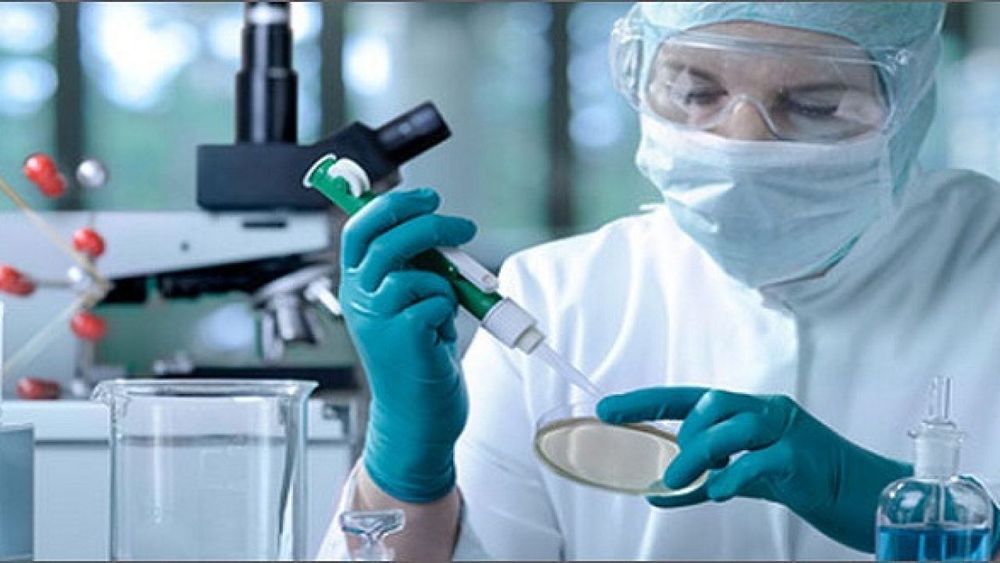
Ghép tế bào gốc được dự đoán là phương pháp giúp điều trị hiệu quả bệnh Parkinson trong tương lai
5. Caring for Parkinson's patients
The disease progresses slowly and gradually, until the end stage, the patient appears to have difficulty swallowing, eat poorly leading to exhaustion, so diet, exercise and body hygiene are paid special attention.
Diet: Patients need to eat enough nutrients, easily digestible foods, lots of fruits and vegetables, drink lots of water to avoid constipation. Hygiene mode: body hygiene, oral hygiene... Exercise mode: daily exercise and exercise. Regular activities will make the muscle system stronger and more flexible. Walking is one of the best methods of exercise, and along with medication, it helps to increase the flexibility of the patient's body. Some simple exercise movements (excerpted from the Reference document for health professionals in 2010)
Walking and turning: walk in a straight line, take long steps and separate legs for good balance Instead, swing your arms regularly, when you need to turn around, go in a circular arc. Practice “walking” while sitting: sit in a chair with a backrest, lift your right and left knee in turn as if you are walking. Repeat this movement 10 times. Get up from bed while lying down: turn over and bend your knees. First, put your feet off the bed, then use your hands to support the surface of the bed to sit up. Shoulder pull: Sit or stand with your back straight, hands in front, hands and elbows close together. Reach your arms out to the sides as far as possible so that the shoulder blades behind your back are close together. Bring your hands back to the original position in front of you. Repeat this movement 10 times. Stand up and sit down: choose recliners with strong armrests and seats. When you want to stand up, you must lean forward and use the handrails on the edge of the chair to push up. When you want to sit down, turn your back to the chair and lean forward and then sit down slowly, using your hands on the chair handles. Twist movement: sit on a chair with your hands on your shoulders and rotate your upper body from right to left and vice versa. Do it as quickly as possible. Repeat this movement 10 times.
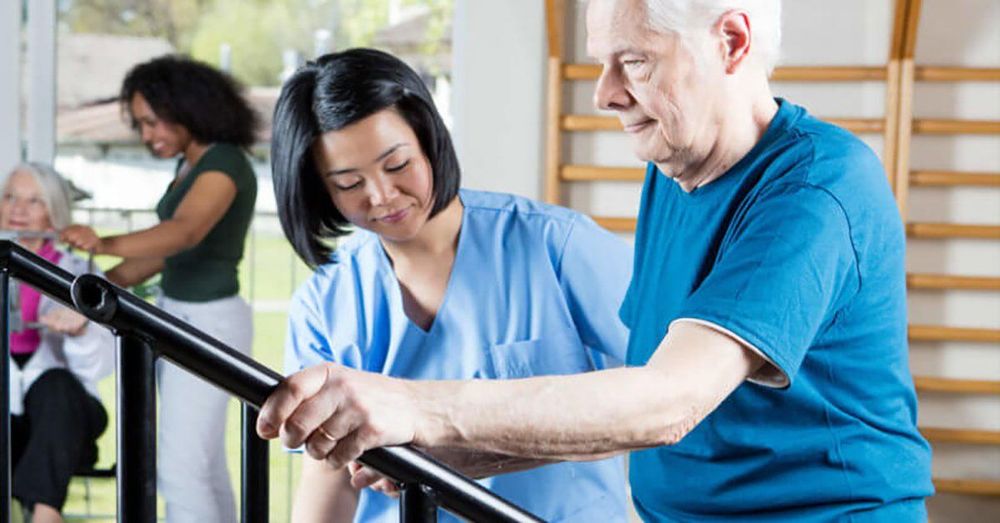
Bệnh nhân Parkinson cần có chế độ tập luyện để phục hồi chức năng
When the body shows symptoms of Parkinson's disease, you should immediately go to a reputable medical facility to be examined and consulted by a specialist. Vinmec International General Hospital is a high-quality medical facility in Vietnam with a team of highly qualified medical professionals, well-trained, domestic and foreign, and experienced.
A system of modern and advanced medical equipment, possessing many of the best machines in the world, helping to detect many difficult and dangerous diseases in a short time, supporting the diagnosis and treatment of doctors the most effective. The hospital space is designed according to 5-star hotel standards, giving patients comfort, friendliness and peace of mind.
Please dial HOTLINE for more information or register for an appointment HERE. Download MyVinmec app to make appointments faster and to manage your bookings easily.
References:
1.Le Quang Cuong (2002), Parkinson's Disease and Syndrome, Medical Publishing House.
2.Reference for Healthcare Professionals 2010
3.First aid (Tr: 287-288)
4.Handbook of Parkinson's Disease (Rajesh Pahwa, Kelly E. Lyons CRC Press, Mar 23, 2007) - 520
5. C.Hausser –Hauw, B. Jarraya, F. Bourdin Vivre avec la maladie de Parkinson Albin Michel, 2016.




